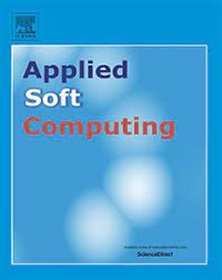Multiplex network influence maximization based on representation learning method
IF 7.2
1区 计算机科学
Q1 COMPUTER SCIENCE, ARTIFICIAL INTELLIGENCE
引用次数: 0
Abstract
Influence maximization based on representation learning has garnered significant attention in recent years, with numerous studies focusing on monolayer networks. However, given the inherent complexity and multiplicity of social networks, addressing the Multiplex network Influence Maximization (MIM) problem is more practical. The MIM problem aims to find a set of seed nodes to maximize the spread of influence throughout the multiplex network. To tackle this issue, this paper introduces a reverse random walk centrality method based on multiplex network representation learning. This method leverages multiplex network representation learning to derive node embeddings across different layers of the network. By calculating similarity weights between nodes within each layer, a reverse random walk is performed to quantify node importance based on the frequency of visits. The top-k nodes with the highest visit counts are then selected as seed nodes. Both single influence propagation and a coupled spread model that integrates competitive and cooperative influence dynamics are considered. Extensive experiments on several real-world datasets demonstrate that the proposed method outperforms existing techniques in terms of effectiveness, providing robust seed node selection for influence maximization. These findings highlight the efficiency and applicability of the proposed method for practical multiplex network scenarios.
求助全文
约1分钟内获得全文
求助全文
来源期刊

Applied Soft Computing
工程技术-计算机:跨学科应用
CiteScore
15.80
自引率
6.90%
发文量
874
审稿时长
10.9 months
期刊介绍:
Applied Soft Computing is an international journal promoting an integrated view of soft computing to solve real life problems.The focus is to publish the highest quality research in application and convergence of the areas of Fuzzy Logic, Neural Networks, Evolutionary Computing, Rough Sets and other similar techniques to address real world complexities.
Applied Soft Computing is a rolling publication: articles are published as soon as the editor-in-chief has accepted them. Therefore, the web site will continuously be updated with new articles and the publication time will be short.
 求助内容:
求助内容: 应助结果提醒方式:
应助结果提醒方式:


